In his 1998 novel A Clash of Kings, George R.R. Martin presciently characterized the deepening divide between Russian President Vladimir Putin’s resolve to wage total war in Ukraine and the West’s hesitancy to respond decisively. As Martin noted, “Power resides only where men believe it resides,” often merely as “a shadow on the wall.” Yet even imaginary “shadows can kill. And ofttimes a very small man can cast a very large shadow.”
Putin is, allegorically speaking, that small man. Far too much respect, if not fear, is being afforded to him and Russia by the United States and NATO. The West, seemingly, is at times far too disquieted about what Russia may do versus what they are doing now on the battlefields across Ukraine. Instead of forcefully mitigating Russia’s devolving strategy of attrition warfare, targeting civilians, and striving to weaken international support, the West is continuing to enable Putin to freely commit overt war crimes.
Dnipro, tragically, was ground zero in the latest round of Russian drone and cruise missile attacks on Jan. 14. This time a Kh-22 air-launched cruise missile, designed for use against aircraft carriers, slammed into a residential building killing 45 civilians including 6 young children and injuring another 79.
Russia is continuing to fire cruise missiles into Ukraine from ground, air, and sea platforms as they have since the beginning of the war. These largely militarily insignificant missile fires are being launched from Crimea, Belarus, Russia, the Black Sea, and the Sea of Azov. In wanton defiance of the Geneva Convention, they deliberately target civilian neighborhoods and workplaces in an attempt to terrorize the Ukrainian citizenry into submission, striking hospitals, schools, bomb shelters, and trains carrying refugees to Poland.
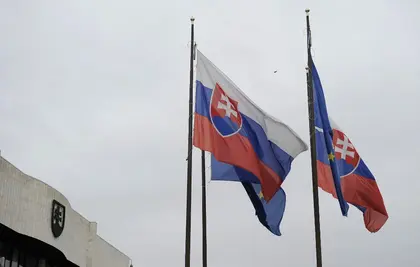
Slovaks Buy Bullets for Ukraine in Defiance of Russia-friendly PM
As residents of Dnipro conducted grim recovery operations, Ukrainian soldiers arrived in Ft. Sill, Oklahoma on Jan. 15 to begin training on the Patriot missile system. While welcomed news, it provides little comfort to the families who lost relatives in Dnipro, particularly as this weapon system could have intercepted and destroyed the Kh-22.
Training that typically lasts a year for U.S. soldiers is being accelerated, but it is, exasperatingly, a glaring example of NATO meeting Ukrainian weaponry needs well after the fact. These troops are needed now to operationalize and man the batteries provided by the U.S., the Netherlands, and Germany to defend against future Russian cruise missile attacks. Instead, families throughout Ukraine will potentially be without an effective air defense for upwards of six months, given that Pentagon spokesman Brig. Gen. Pat Ryder indicated training would last “several months.”
Ukrainian President Volodymyr Zelensky has consistently pleaded with the West for assistance against this type of aerial assault on his country. Initially last March, he called for the establishment of a no-fly zone. Once U.S. President Joe Biden refused, Zelensky changed his request to ground-based air defense systems to protect his citizens and the nation’s critical infrastructure. Ukraine was again denied when the U.S. and Brussels, seemingly afraid of Putin’s shadows on the wall, viewed the request as a “non-starter,” and refused to place NATO soldiers in a position that could lead to a direct confrontation with Russia.
Ten months later, finally, Patriot batteries are being committed to defend Ukraine, though they will not likely be in place until at least July. The lag time between commitment and utilization is literally killing Ukrainians.
The process of getting Ukraine the military equipment it needs in real time is too slow, and the petty political and diplomatic bureaucracy bogging down military assistance packages significantly contribute to this lag time. The maddening stand-off between the U.S. and Poland on one side and Germany on the other regarding M1 Abrams and Leopard 2 tanks is only one such inexcusable example.
Yes, the logistics involved in transferring equipment to Ukraine is a challenge. Yes, training Ukrainian soldiers on new platforms and keeping those systems up and running on the battlefield present even greater challenges. Fueling and repairing the turbine engine of an M1 Abrams tank while under fire are not easy tasks either. But, to date, the Ukrainian army has proven itself to be highly adaptable on and off the battlefield.
Moreover, we are now 11 months into a war that threatens the very existence of Ukraine and its national and cultural identity. This is also a war that is fundamentally threatening global democracy and European security. The reactive manner in which the Biden Administration and NATO collectively respond to the Russian threat is needlessly creating a dangerous lag between action and reaction, while putting Ukrainians at risk.
Russians have been reducing cities to rubble for decades – it’s a tactic of brutality and terrorism built into their doctrine. Russian General Sergey Surovikin built his reputation on this kind of warfare. Where is the predictive analysis? The Red Teaming? Wargaming? Why are we not further out in front of this, anticipating Russian actions and setting conditions to counter them?
The West is severely underestimating Putin’s resolve and the callous extent to which he is willing to respond to his general’s battlefield failures, including targeting civilians, weaponizing winter, and adopting a strategy of battlefield attrition. The Biden administration’s “just enough” strategy is far too reactive and rarely proactive. Wars are not won by playing defense. Wars are won by going on the offensive.
And yet, inexplicably, because of Putin’s outsized shadows on the wall, the Biden administration’s unwavering approach to this war is to restrict Kyiv’s combat operations to inside the borders of Ukraine. We can think of no other war in modern history wherein the aggrieved nation was forced to afford arbitrary sanctuary to its aggressor.
The fear of Ukraine using weapons provided by the U.S. and NATO to strike back at targets beyond their borders is unnecessarily paralyzing decision makers in Washington and Brussels, despite Ukraine’s having successfully weaponized Soviet Tu-141 reconnaissance drones to strike targets deep within Russia. The unintended consequence of this approach, however, is that it is preventing the West from anticipating the next threat and putting the right weapons systems in place before they are needed.
This avoidable blind spot is also preventing replicating the notable, if not legendary, success of the introduction of the High Mobility Artillery Rocket System (HIMARS) onto the battlefield. HIMARS dynamically changed the course of the war and shifted significant momentum to Ukraine. But the system came at a price that is now marginalizing its effectiveness. Restrictions on its munitions – specifically, the Guided Multiple Launch Rocket System (GMLRS) and its range of approximately 70-kilometers, and where they could fire. Russia simply adapted to the range limitations, placed high value targets outside their range, and moved others to sanctuary beyond Ukrainian territory in Russia and Belarus.
Dnipro, however, may prove to be the next to last piece of the Jenga puzzle for Putin in Ukraine, and Zelensky’s resilience may finally be paying off despite the horrific cost. The resulting outpouring of new Western financial pledges and donations of military equipment and ammunition to Ukraine by world leaders at the World Economic Forum in Davos, Switzerland are sending a clear message to the Kremlin. The free world remains united in their support against Russian aggression. The U.S., United Kingdom, Denmark, Latvia, Canada, Germany, Estonia, Finland, and many others are giving Ukraine a much needed second wind as spring approaches.
But is it enough of what Ukraine needs to win, or is it more just “weakening Russia” and prolonging the war at Kyiv’s expense? What is the Biden administration’s endgame strategy? Yes, Washington is providing billions of dollars in support – military hardware, ammunition, training, and humanitarian assistance, but there is no discernable end state.
Washington’s message, for now, is disappointingly clear. We stand by you and the defense of Ukraine. You can kill as many Russians as you need, but you cannot go beyond your borders with our weapons to do it. There is no stated purpose like “defeat Russia,” or “restore Ukrainian territorial integrity,” including the Donbass and Crimea.
Strategic ambiguity for Kyiv is tantamount to strategic certainty for Moscow. That is an unacceptable status quo. Constraining funding and limiting Ukraine to a defensive war within their borders will likely turn Putin’s “special military operation” into the very “forever war” Biden claimed he would no longer support after pulling U.S. forces out of Afghanistan.
While robust, the latest U.S. $2.5 billion aid package to Ukraine announced on January 19th is not nearly enough. It includes 59 Bradley infantry fighting vehicles and 90 Stryker armored personnel carriers. What is glaringly missing from the package is exactly what Ukraine needs most. Namely Army Tactical Missile System (ATACMS), Ground-Launched Small Diameter Bombs (GLSDB), M1 Abrams tanks, and fast jets such as the F-16.
These weapons, as part of a combined arms team, would provide the necessary offensive capability to maneuver and shape the battlefield and provide operational reach beyond Ukraine’s borders. They would also enable Kyiv to strike cruise missile and drone launching points, interdict Russian forces before they can arrive on the battlefield, target ammunition, fuel, and supply depots, as well as Russian command and control centers.
They would also allow Zelensky to take the fight to Russia instead of being forced to wait for Russia to bring the fight to Ukraine on Putin’s terms. Most importantly, they would afford no sanctuary to Russian forces.
Zelenskyy is not afraid of Putin’s shadows. He made clear early on when he refused Biden’s offer to evacuate him. Zelensky is the Winston S. Churchill of the 21st century. He has offered his blood, his sweat, and his toil. It is now time the West offers its own in defense of democracy.
In the words of U.S. General George S. Patton, “never let the enemy pick the battle site.” That core element of operational art seems to have been forgotten by our Secretary of Defense, retired Army General Lloyd Austin, and the President’s senior military advisor, the Chairman of the Joint Chiefs of Staff, Army General Mark Milley. It’s time the Biden administration lost its fear of Putin’s outsized shadows. Ukraine’s existence and the lives of its valiant people depend on it.
Copyright 2023. Jonathan E. Sweet and Mark C. Toth. All rights reserved.
Jonathan Sweet, a retired Army colonel, served 30 years as a military intelligence officer. His background includes tours of duty with the 101st Airborne Division (Air Assault), DIA, NSA and NGA. He led the U.S. European Command Intelligence Engagement Division from 2012-14, working with NATO partners in the Black Sea and Baltics. Follow him on Twitter @JESweet2022.
Mark Toth is a retired economist, historian and entrepreneur who has worked in banking, insurance, publishing, and global commerce. He is a former board member of the World Trade Center, St. Louis, and has lived in U.S. diplomatic and military communities around the world, including London, Tel Aviv, Augsburg, and Nagoya. Follow him on Twitter @MCTothSTL.
The views expressed in this article are the authors’ and not necessarily those of the Kyiv Post.
You can also highlight the text and press Ctrl + Enter


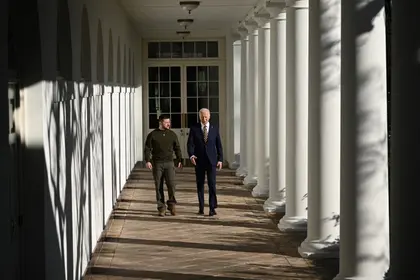
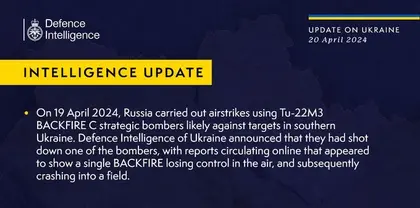
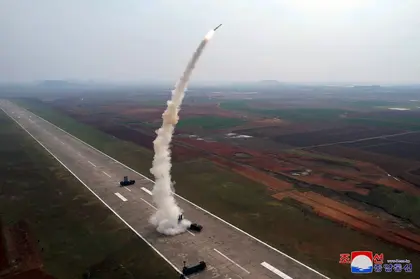
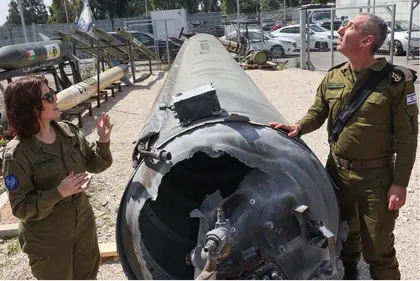
Comments (0)